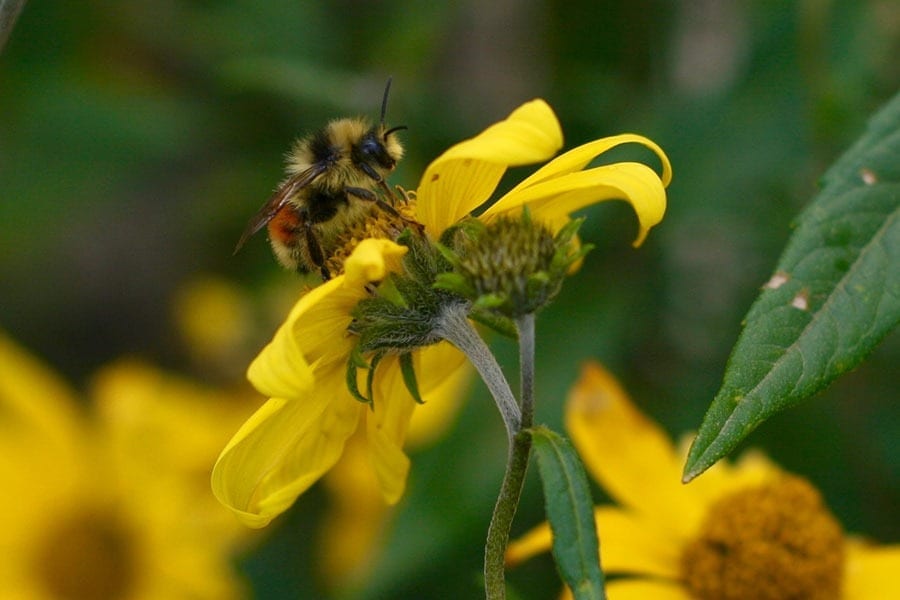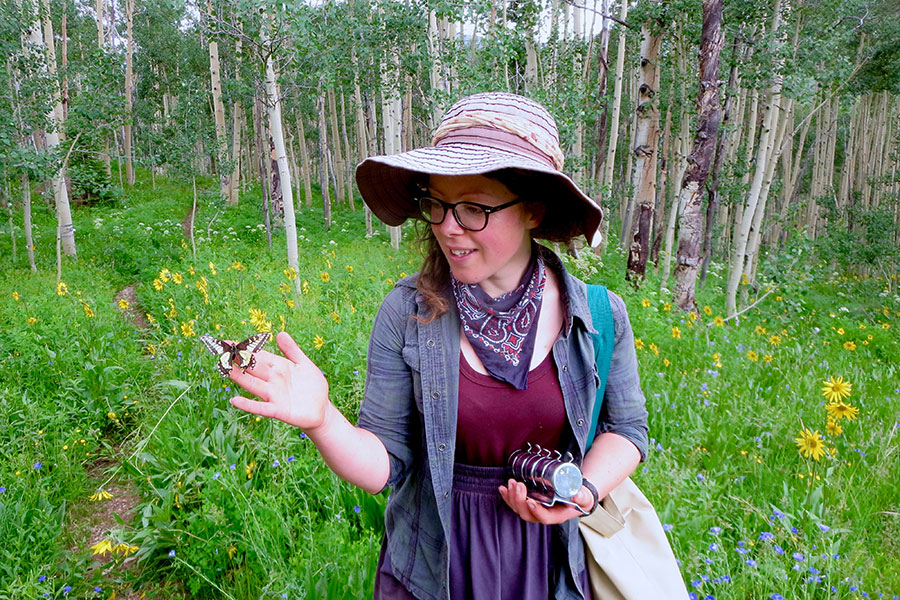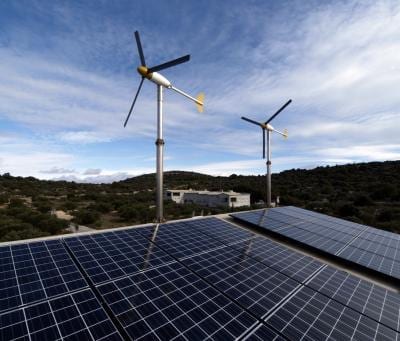
New research from a team of Florida State University scientists and their collaborators is helping to explain the link between a changing global climate and a dramatic decline in bumble bee populations worldwide.
In a study published Friday, Sept. 29, in the journal Ecology Letters, researchers examining three subalpine bumble bee species in Colorado’s Rocky Mountains found that, for some bumble bees, a changing climate means there just aren’t enough good flowers to go around.
The team analyzed the bees’ responses to direct and indirect climate change effects.
“Knowing whether climate variation most affects bumble bees directly or indirectly will allow us to better predict how bumble bee populations will cope with continued climate change,” said FSU postdoctoral researcher Jane Ogilvie, the study’s lead investigator. “We found that the abundances of all three bumble bee species were mostly affected by indirect effects of climate on flower distribution through a season.”
As the global climate changes gradually over time, delicately poised seasonal cycles begin to shift. In the Rocky Mountains, this means earlier snowmelts and an extended flowering season.
On the surface, these climatic changes may seem like a boon to bumble bees — a longer flowering season might suggest more opportunity for hungry bees to feed. However, Ogilvie and her collaborators found that as the snow melts earlier and the flowering season extends, the number of days with poor flower availability increases, resulting in overall food shortages that are associated with population decline.
“When researchers think about flower effects on bees, they typically consider floral abundance to be the most important factor, but we found that the distribution of flowers throughout a season was most important for bumble bees,” Ogilvie said. “The more days with good flower availability, the more bees can forage and colonies can grow, and the bigger their populations become. We now have longer flowering seasons because of earlier snowmelt, but floral abundance has not changed overall. This means we have more days in a season with poor flower availability.”
Declining bumble bee populations globally have long been cause for alarm among conservationists, who see the buzzy pollinators as a bellwether for the malign effects of a changing climate.

Ogilvie said these most recent findings contribute to a growing body of evidence for the grave ecological consequences of climate change.
“Declining bumble bee populations should be a warning about the expansive detrimental effects of climate change,” Ogilvie said. “Bumble bees have annual life cycles, so their populations show responses to change quickly, and many species live in higher altitude and latitude areas where the change in climate is most dramatic. The effects of climate change on bumble bees should give us pause.”
The damage inflicted by climate change on global pollinator populations is of particular concern for scientists, as these species are crucial to agricultural productivity and the propagation of natural plant communities.
As researchers work toward a better understanding of climate change and its ecological effects, the link between pollinator health and shifting climate processes is becoming impossible to ignore.
“Pollinator species around the world have been declining, but we are still learning about what might be causing declines,” said FSU Professor of Biological Science Nora Underwood, a coauthor of the study. “Although not all species are influenced in the same way, I was excited to be part of this study because we now have long-term data that shows changing climate is influencing bumble bees.”
While this research helps to confirm the long-presumed connection between climate change and bumble bee population decline, Ogilvie said that the findings indicate a more difficult path for conservationists than previously anticipated.
“I’m afraid that this research shows conservation will be even more complicated than expected,” she said. “In addition to the response of the target species, our findings suggest that we should be considering how a species’ food resources might be responding to climate change. For bumble bees in particular, we need to make sure that they have enough flowers available during the entire season.”
Learn more: A stinging report: FSU research shows climate change a major threat to bumble bees
The Latest on: Bumble bees
[google_news title=”” keyword=”bumble bees” num_posts=”10″ blurb_length=”0″ show_thumb=”left”]- Happy bee dayon May 18, 2024 at 7:48 pm
The Union Nations designated today, May 20, as World Bee Day, to raise awareness of the importance of pollinators and the threats they face.
- Albuquerque company develops pesticide that won’t harm beeson May 18, 2024 at 5:57 pm
ALBUQUERQUE, N.M. — Shauncey Adee with Bee Free Honey Farms has been a beekeeper for three years now. In that time, she has learned a lot about harvesting honey and keeping her bees safe. “The first ...
- Eastern Highveld Beekeepers Association holds annual Bee and Honey Showon May 18, 2024 at 5:00 pm
The Eastern Highveld Beekeepers Association (EHBA) held its annual Bee and Honey Show on May 4 and 5 at Heckers Garden Centre. The event aimed to generate more support for locally sourced raw honey ...
- BUZZY BEES: How we can help endangered pollinators thriveon May 18, 2024 at 6:35 am
Have you heard the latest buzz? May 20 is World Bee Day! Created to raise awareness of the importance of pollinators and the threats they face, this day is a bee-utiful time to appreciate the hundreds ...
- The beauty and benefits of bees and other pollinatorson May 17, 2024 at 7:12 pm
In this episode of World Wildlife Fund’s Wildlife Café series, Alexander Nicolas and Clay Bolt have a conversation about the remarkable world of bees, insects, and other pollinators. There are nearly ...
- Local man stung 400 times by bees, nonprofit comes to rescueon May 17, 2024 at 3:12 pm
SAN ANTONIO - A local nonprofit came to the rescue after a local man was stung more than 400 times by honey bees. On Thursday, "bee wranglers" with the American Honey Bee Protection Agency (AHBPA) ...
- Who's Up for Some Killer Bee Beer?on May 17, 2024 at 12:55 pm
If you’re looking for booze with an extra bit of buzz, you’re in luck. Microbiologists in the U.K. have just created beer using yeast sourced from the guts of Africanized honey bees, a.k.a. killer ...
- Killer Bee Beer? You Bet It's Been Brewedon May 17, 2024 at 9:53 am
People have been brewing beer for thousands of years. Its a process that can be done on an industrial scale or at home, and it usually involves .. | Microbiology ...
- Bee careful: Man stung over 400 times; man, hive savedon May 17, 2024 at 8:46 am
A Texas man was stung more than 400 times by honey bees. "Bee wranglers" with the American Honey Bee Protection Agency removed and relocated a colony of bees from an abandoned boat in a wooded area in ...
- Scientists brew killer bee beeron May 16, 2024 at 12:27 pm
Scientists from Cardiff University have used brewer's yeast that resides in the gut microbiome of killer honeybees in Namibia and applied it to develop a unique craft beer.
via Google News and Bing News











